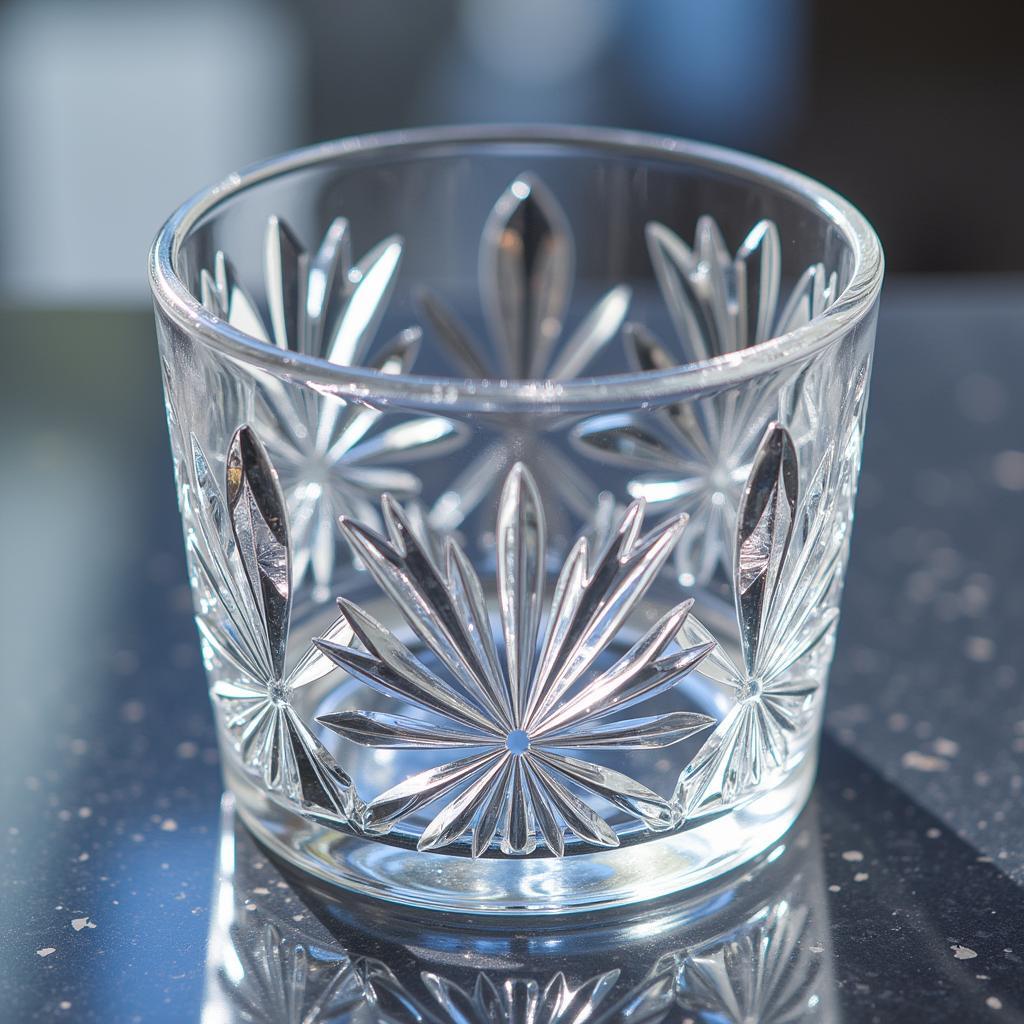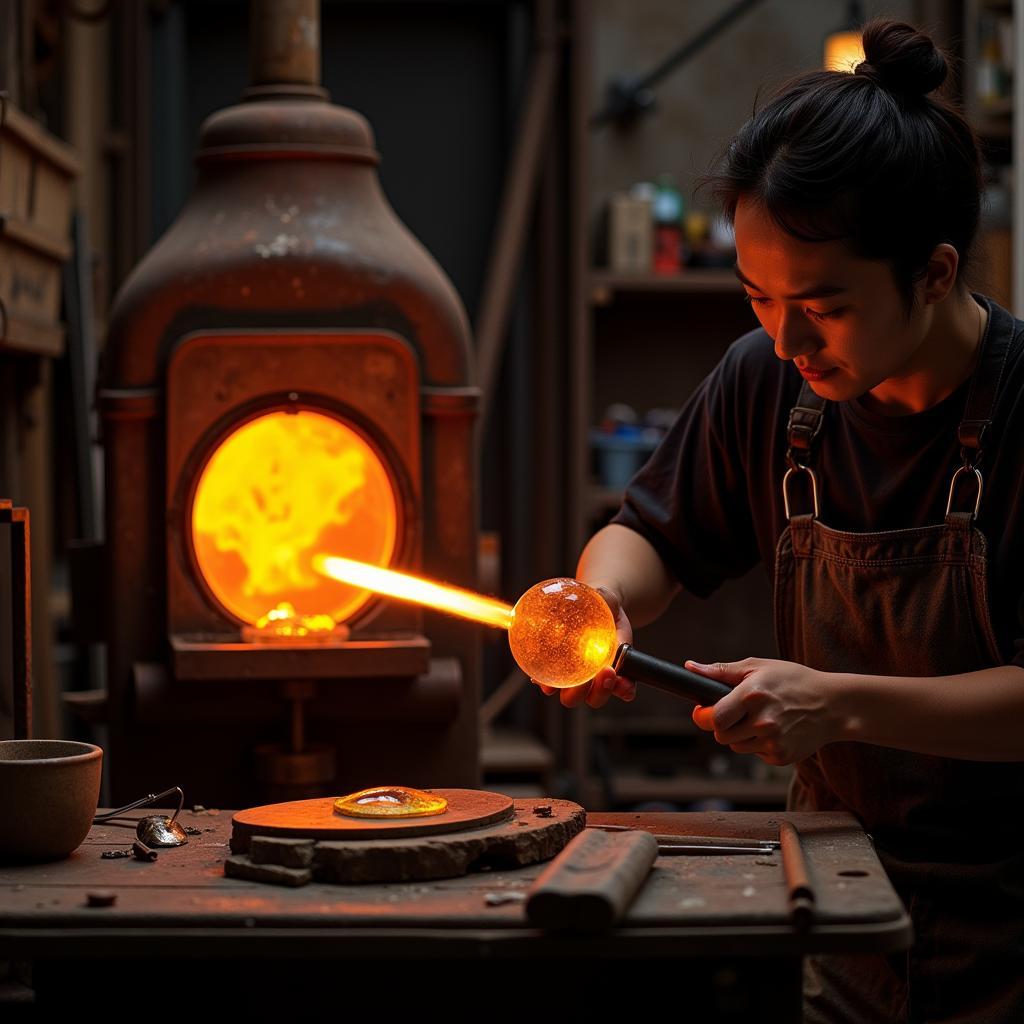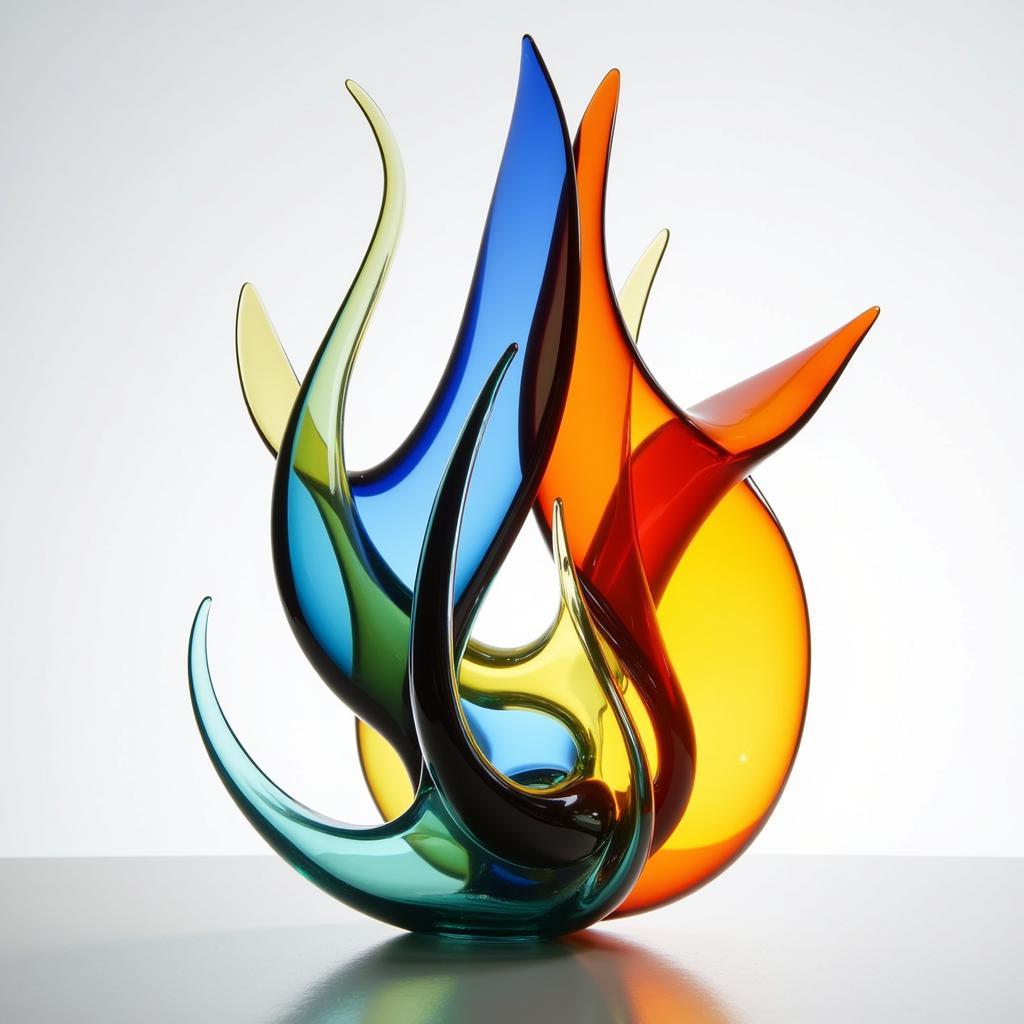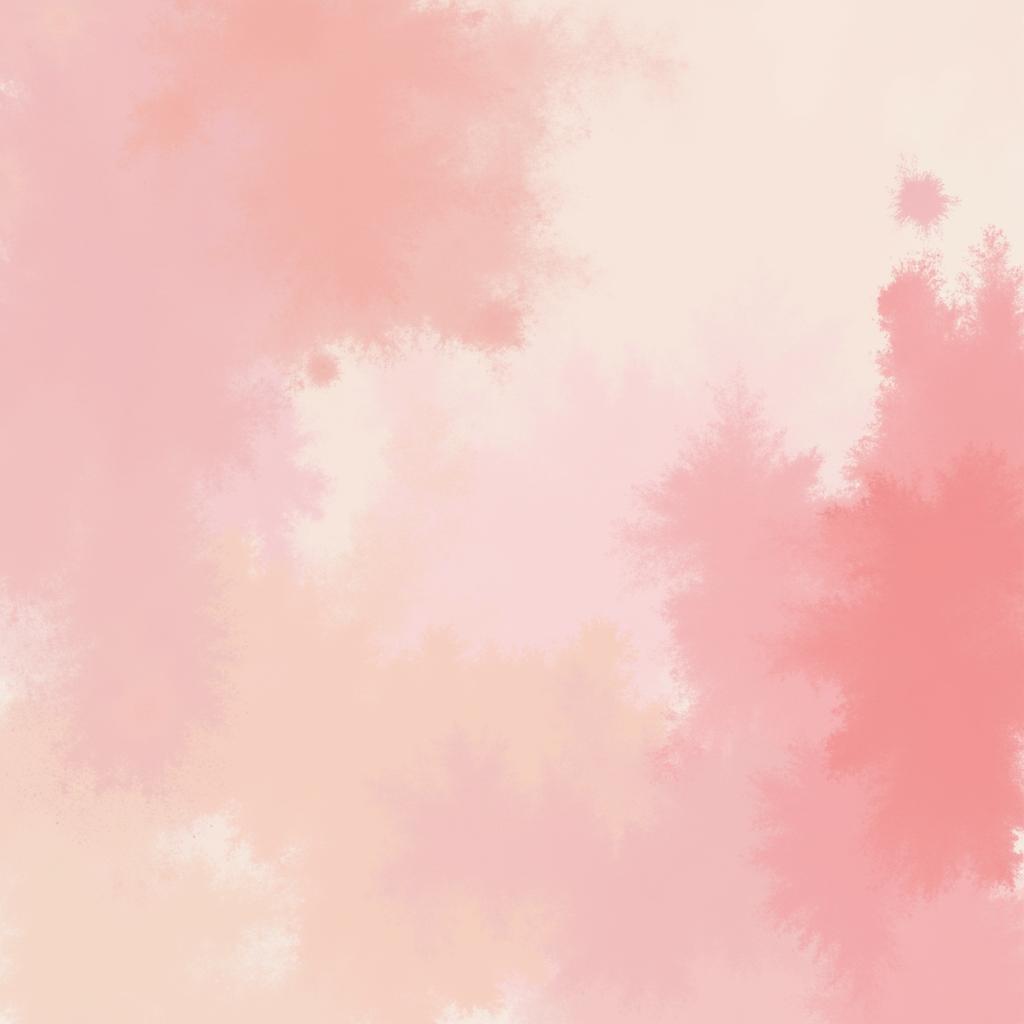Exploring the Delicate Beauty of Japanese Glass Art
Japanese Glass Art, a captivating blend of traditional techniques and modern innovation, has mesmerized art enthusiasts worldwide. From the intricate details of Edo Kiriko to the contemporary expressions of glassblowing, this art form offers a unique perspective into Japanese aesthetics and craftsmanship. This article delves into the rich history, diverse techniques, and prominent artists shaping the world of Japanese glass art. See how these exquisite pieces can elevate your home decor with the delicate beauty of pressed botanical wall art.
A Journey Through Time: The History of Japanese Glass Art
The earliest forms of glass art in Japan can be traced back to ancient beads and ornaments. However, the true flourishing of glass art began during the Edo period (1603-1868). This era witnessed the birth of Edo Kiriko, a distinctive style of cut glass characterized by its intricate patterns and vibrant colors. These elaborate designs, often inspired by nature, reflect the meticulous attention to detail that permeates Japanese art.
The Rise of Edo Kiriko: A Symbol of Elegance
Edo Kiriko, meaning “cut glass from Edo (former Tokyo),” emerged as a status symbol among the elite. Skilled artisans painstakingly carved intricate patterns onto the surface of glass objects, creating stunning visual effects. Traditional motifs, such as chrysanthemum flowers and flowing water, symbolized auspiciousness and prosperity.
 Example of Edo Kiriko Glass Art
Example of Edo Kiriko Glass Art
Beyond Edo Kiriko: Exploring Contemporary Japanese Glass Art
While Edo Kiriko remains a cornerstone of Japanese glass art, the 20th and 21st centuries have witnessed a surge in contemporary glass art practices. Artists are pushing the boundaries of the medium, experimenting with new techniques, materials, and artistic expressions. This has led to a diverse range of styles, from minimalist sculptures to vibrant glass installations. Explore the delicate art of arte lino.
The Fusion of Tradition and Innovation
Contemporary Japanese glass artists often draw inspiration from traditional techniques while incorporating modern influences. This creates a unique dialogue between the past and present, resulting in artworks that are both deeply rooted in Japanese culture and strikingly modern.
Mastering the Craft: Techniques in Japanese Glass Art
Japanese glass art encompasses a wide array of techniques, each requiring immense skill and precision. From the meticulous cutting of Edo Kiriko to the free-flowing forms of glassblowing, these techniques contribute to the diverse and captivating nature of Japanese glass art.
The Art of Glassblowing: Breathtaking Creations
Glassblowing, introduced to Japan in the late 19th century, has become a popular medium for contemporary artists. The process involves shaping molten glass using a blowpipe, allowing for organic and fluid forms. The heat and the breath combine to create pieces of art that capture the essence of movement and light. You might be interested in delicate paper wall art.
 Glassblowing Process in Japan
Glassblowing Process in Japan
“Japanese glass artists have a unique ability to infuse their work with a sense of tranquility and balance,” says renowned art historian, Dr. Aiko Tanaka. “Their mastery of technique combined with a deep understanding of aesthetics results in pieces that are both visually stunning and emotionally resonant.”
Prominent Figures in Japanese Glass Art
Throughout history, numerous artists have contributed to the evolution and recognition of Japanese glass art. Their dedication to the craft and innovative approaches have pushed the boundaries of the medium, inspiring generations of artists.
Celebrating Contemporary Masters
Contemporary Japanese glass artists are gaining international acclaim for their unique styles and artistic vision. Their work is exhibited in prestigious galleries and museums worldwide, showcasing the vibrant and ever-evolving nature of Japanese glass art. Discover the beauty of japanese pressed flower art.
 Contemporary Japanese Glass Sculpture
Contemporary Japanese Glass Sculpture
“The beauty of Japanese glass art lies in its ability to capture light and transform it into something truly magical,” shares acclaimed glass artist, Hiroshi Yamamoto. “Each piece tells a story, reflecting the artist’s skill, inspiration, and connection to the material.” Consider the elegance of a lotus art print.
Conclusion
Japanese glass art, with its rich history and diverse techniques, continues to captivate and inspire. From the traditional elegance of Edo Kiriko to the innovative expressions of contemporary artists, this art form offers a unique blend of beauty, skill, and cultural significance. Exploring Japanese glass art is a journey into a world of delicate craftsmanship and breathtaking creativity.
FAQ
- What is Edo Kiriko?
- What are the common techniques used in Japanese glass art?
- Who are some prominent Japanese glass artists?
- Where can I buy Japanese glass art?
- How can I care for Japanese glass art?
- What is the significance of glass art in Japanese culture?
- What are some contemporary trends in Japanese glass art?
For support, contact Phone Number: 02462573573, Email: [email protected] Or visit us at: Savico Megamall, 7-9 Đ. Nguyễn Văn Linh, Gia Thụy, Long Biên, Hà Nội 10000, Việt Nam. We have a 24/7 customer service team.



